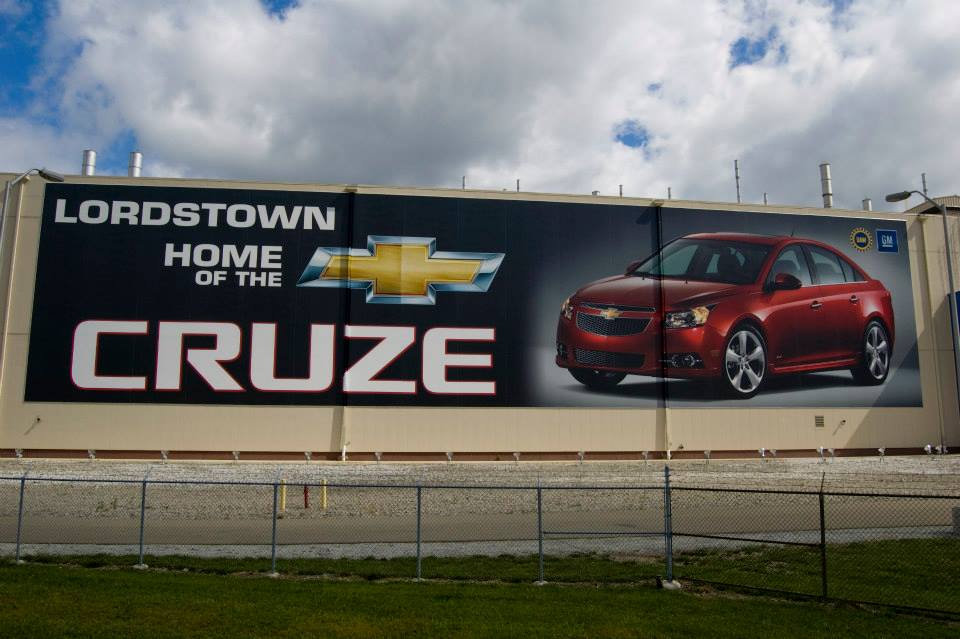
The automaker wants to build a new battery factory right next to the factory it shut down.
One of the big auto industry stories of 2019 was the decision by General Motors (GM) to permanently close its longtime assembly plant in Lordstown, Ohio. Although the company pledged to relocate the workers affected, the shutdown caused devastation that rippled throughout the community.
Now the automaker is eyeing a return to Lordstown, right next door to the facility it shuttered less than a year ago.
GM officially entered into a purchase agreement this week to build a new battery-cell plant with South Korea’s LG Chem on a 158-acre vacant site adjacent to its old, sprawling Lordstown factory. If it all comes together, construction on the new $2.3 billion battery plant will commence this spring, and the new factory will end up employing around 1,100 people.
That’s good news and all, but it's still less than the 4,500 people who once worked at the old factory. And as we pointed out in December, wages at the new facility will likely be around $10 to $15 an hour, much less than the $32 an hour that many workers represented by the United Autoworkers (UAW) made at the shuttered Lordstown plant.
If you’ve been following this saga since last year, you know that GM has maintained that its decision to close that plant is part of a larger effort to expand its electric vehicle (EV) business. The company is aiming to have 20 battery-powered models available by 2023 and sell 1 million EVs worldwide by 2026.
The battery factory brings the company closer to that goal, GM spokesperson Dan Flores told the Detroit News. “This move gets us a step closer to making the state-of-the-art plant a reality and positioning the Mahoning Valley as a major force in technology and electric vehicle manufacturing,” Flores said.
The future of the old Lordstown facility is also connected to EVs. GM sold the plant to startup Lordstown Motors, which plans to build electric pickup trucks there. It has even promised to pay union-level wages to the 400 workers it plans to employ at the site.
GM appears to really want to make sure Lordstown Motors succeeds — it is allowing Lordstown Motors to borrow up to $50 million if needed, and there’s even an option for GM to buy back the plant.
Wow, GM is really dedicated to EVs! Well… sure. But there’s more to this story.
GM faced a lot of (deserved) criticism when it shutdown the old Lordstown plant. It also was a sticking point during the UAW strike last year, as the union wanted to save the plant (along with two GM transmission plants). Ultimately, the Lordstown plant still closed… but GM agreed to invest in new plants in the Lordstown area.
Tim O’Hara, the president of UAW Local 1112, told the Detroit Free Press in December that there’s a lot of distrust among the folks who once worked at the old Lordstown plant, especially since so many of them had to uproot their families and transfer to new facilities in other states to keep their jobs.
“There is a lot of suspicion that once it’s all said and done that GM itself will end up building electric vehicles in Lordstown after all its loyal employees and Local 1112 members had to move throughout the nation,” he said.
In other GM news, the company announced this week that it will transition more than 1,350 hourly employees into full-time roles. That also was one of the things that the UAW pushed during the strike.
One interesting twist to this whole saga, by the way: GM once owned the property where it plans to build the new battery factory. It gave up the land during its 2009 bankruptcy.
